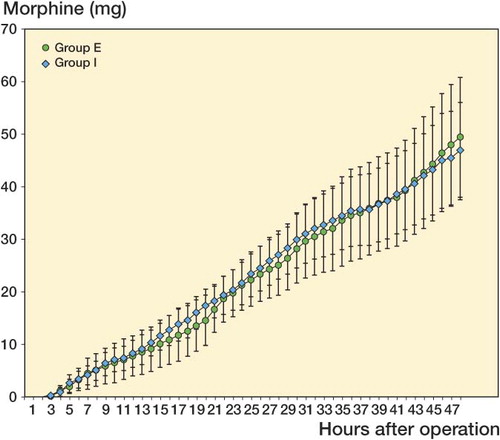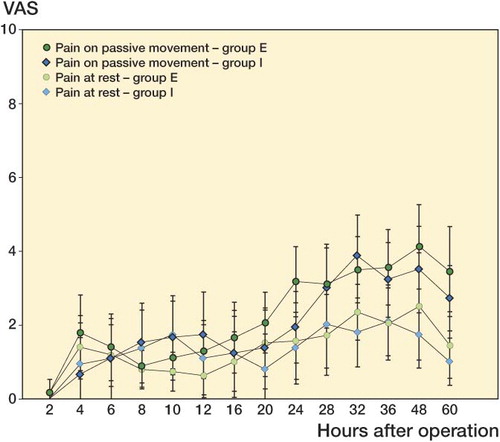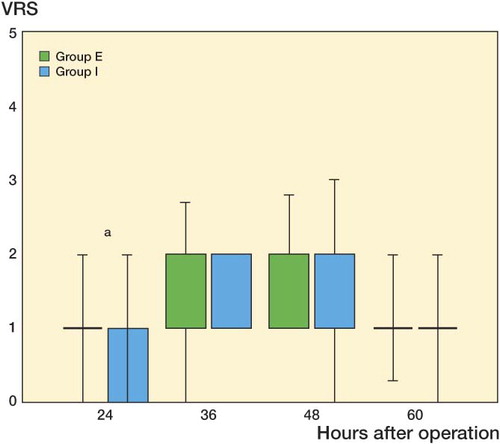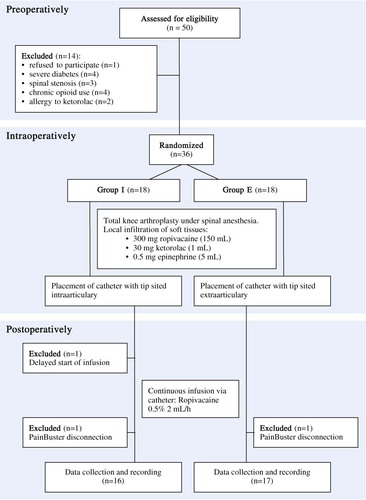Figures & data
Demographic and intraoperative data on patients
Figure 2. Cumulative postoperative morphine (mg; mean ± 95% CI) during the first 48 postoperative hours after TKA. There were no significant differences between group I (intraarticular infusion of ropivacaine) and group E (extraarticular infusion of ropivacaine).

Figure 3. Mean postoperative visual analog pain score (VAS; mean ± 95% CI) assessed at rest and on passive movement at different times during the 48-h follow-up after TKA. No significant difference was recorded between groups.

Figure 4. Box plots showing intensity of pain during exercise estimated by physiotherapists according to Verbal Rating Score (0 = none, 1 = mild, 2 = moderate, 3 = strong, 4 = intense, and 5 = unbearable) in group I (intraarticular infusion of ropivacaine) and group E (extraarticular infusion of ropivacaine). The boxes show the interquartile range, and the whiskers the minimum and maximum values.

